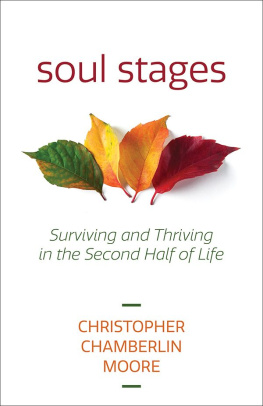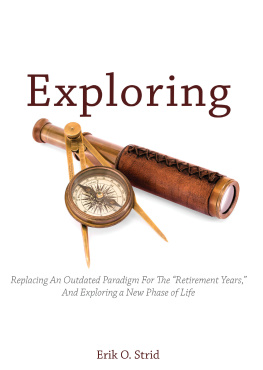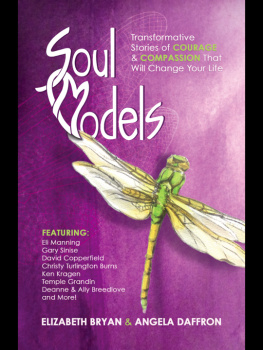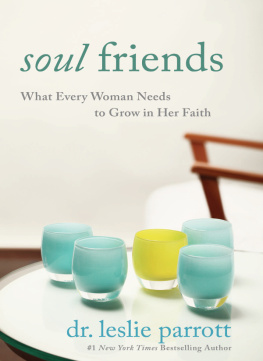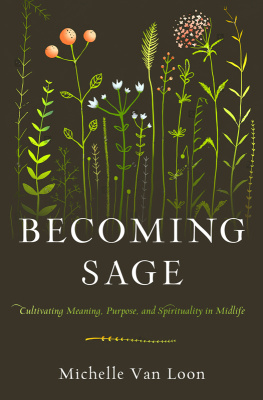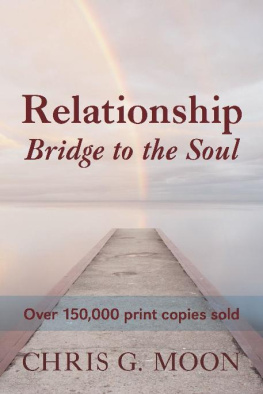soul stages

Surviving and Thriving
in the Second Half of Life

CHRISTOPHER
CHAMBERLIN
MOORE


Copyright 2021 by Christopher Chamberlin Moore
All rights reserved. No part of this book may be reproduced, stored in a retrieval system, or transmitted in any form or by any means, electronic or mechanical, including photocopying, recording, or otherwise, without the written permission of the publisher.
Unless otherwise noted, the Scripture quotations contained herein are from the New Revised Standard Version Bible, copyright 1989 by the Division of Christian Education of the National Council of Churches of Christ in the U.S.A. Used by permission. All rights reserved.
Scripture quotations marked (NIV) are taken from the Holy Bible, New International Version, NIV. Copyright 1973, 1978, 1984, 2011 by Biblica, Inc. Used by permission of Zondervan. All rights reserved worldwide. www.zondervan.com. The NIV and New International Version are trademarks registered in the United States Patent and Trademark Office by Biblica, Inc.
Morehouse Publishing, 19 East 34th Street, New York, NY 10016
Morehouse Publishing is an imprint of Church Publishing Incorporated.
Cover design by Jennifer Kopec, 2Pug Design
Typeset by Denise Hoff
Library of Congress Cataloging-in-Publication Data
Names: Moore, Christopher Chamberlin, author.
Title: Soul stages : surviving and thriving in the second half of life / Christopher Chamberlin Moore.
Description: New York, NY : Morehouse Publishing, [2021] | Includes bibliographical references.
Identifiers: LCCN 2021024134 (print) | LCCN 2021024135 (ebook) | ISBN 9781640654327 (paperback) | ISBN 9781640654334 (epub)
Subjects: LCSH: Middle-aged persons--Religious life. | Older persons--Religious life. | Aging--Religious aspects--Christianity.
Classification: LCC BV4579.5 .M66 2021 (print) | LCC BV4579.5 (ebook) | DDC 248.8/4--dc23
LC record available at https://lccn.loc.gov/2021024134
LC ebook record available at https://lccn.loc.gov/2021024135

To Janice, who has supported me through all my soul
stages and who helps make the second half of life well
worth living, and to our children Alice and Douglas,
who are embarked on their own life journey.
To my friend Gail Morgan, who has been
an invaluable part of this project.
To the late Rev. John A. Sanford, who showed
me that the personalities of the Bible could be
understood psychologically as well as spiritually.
To my third grade Sunday school teacher at the
Church of the Redeemer in Morristown, New Jersey,
who instilled in me a lifelong love of the Bible.
To my colleagues and the members of the Brandywine
Collaborative Ministries in Wilmington, Delaware,
where this material was presented as a Lenten course.


W hat would it be like to live the second half of your life with real enthusiasm? What would it be like to live with purpose and direction, to be fully present at this stage, enjoying what life has to offer, neither dwelling in the past nor deferring your real life for some imaginary time in the future? What would it be like to live in such a way that you are fully open to whatever life brings?
Several years ago, a friend of mine visited an old country church in England. On the wall was a plaque dedicated to a former pastor who had ministered to the congregation during a time when another denomination was making inroads into the flock. From the point of view of the existing church members, these new believers showed entirely too much fervor for their religion. The members had a word to describe it: enthusiasm. From their point of view, it was a matter of pride that they should avoid this type of enthusiasm at all costs. Accordingly, the plaque on the wall read:
To our beloved former pastor, who led this church for forty-seven years, with no enthusiasm.
I have known people who lived the second half of their lives with no enthusiasm, or at least no enthusiasm I could detect. I have also known people who faced the second half with a sense of dread, seeing it as a step on the road to decline and irrelevance rather than an opportunity for new life experiences and for spiritual, emotional, and psychological growth.
The fact is that people of all ages today are struggling. News stories highlight the number of people succumbing to what some have called the diseases of despair: alcoholism, substance abuse, and suicide. Even those who seem to have done well according to the standards of our society find themselves asking, Is this all there is?
I believe most people, whether they consider themselves successful in the eyes of the world or not, experience some degree of difficulty in transitioning from one life stage to the next. For many, the passage of years seems to threaten a loss of vigor, of physical attractiveness, of relevance. It threatens their image of themselves usually formed at a much younger age and reinforced by society. It is amazing to me how many words used to describe stages in the second half of life are negative in tone. We hear about the midlife person in crisis or the senior as a geezer. Not only are these terms negative, they also provide no road map for negotiating each new stage, and they leave us blind to the treasures as well as the potential challenges of each new chapter.
The subject of this book is to look at adult life stages, especially those in the second half, and ask some basic questions: Whats going on here? What are the challenges of this stage? What are the pitfalls? How is this stage preparing me for the next chapter of my life?
More than a generation ago, journalist Gail Sheehy gave us such catchy terms as The Trying Twenties, Catch-30, and The Age 40 Crucible to describe adult life stages in her bestselling book, Passages. Many books by other authors followed that explored various aspects of the adult life journey. But while most discussed the psychological characteristics of each stage, few related spirituality to psychology or looked for the interconnections between the two.
There is a book that does just that. It shows a young person struggling to gain a sense of himself and of his life path as he enters adulthood. It shows men and women grappling with personal crises and changed perceptions of themselves at midlife. It shows older adults finding meaning and purpose in the senior years. That book is the Bible. It is probably the single most overlooked resource for people struggling to make sense of their lives and of the changes they experience during the passage from youth to senior adulthood.
The Bible offers no theory of adult life stages. It does give us portrayals of individuals at various ages struggling with the same issues people face todayissues not particular to any age or place or culture but universal to all human beings. These men and women portrayed in the Bible, these siblings under the skin, help give us insight into the challenges we face as we journey from young adulthood to the senior years.

